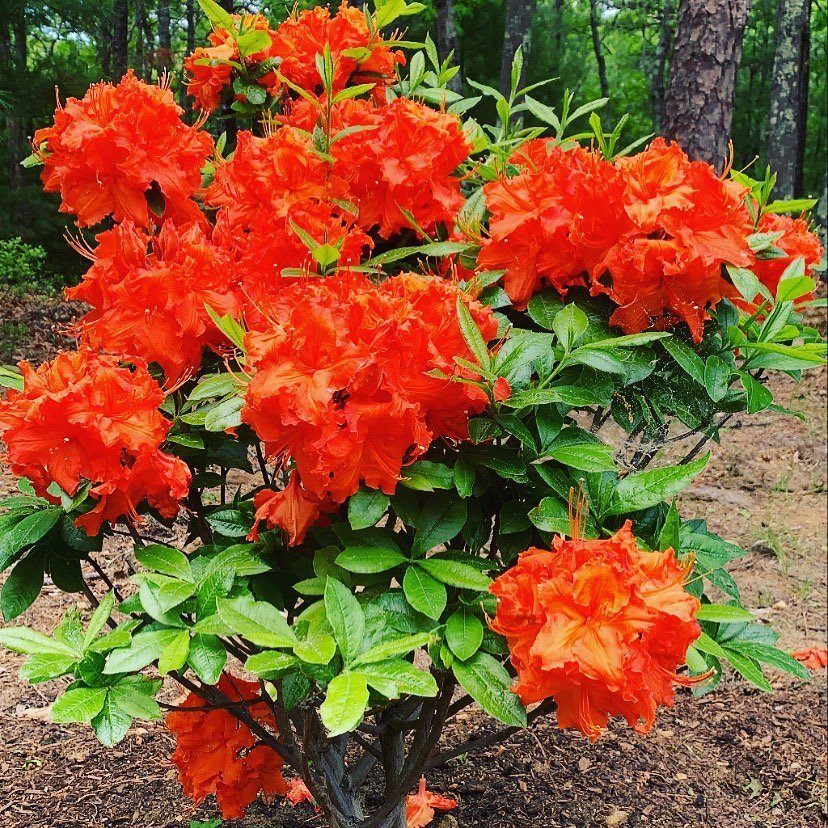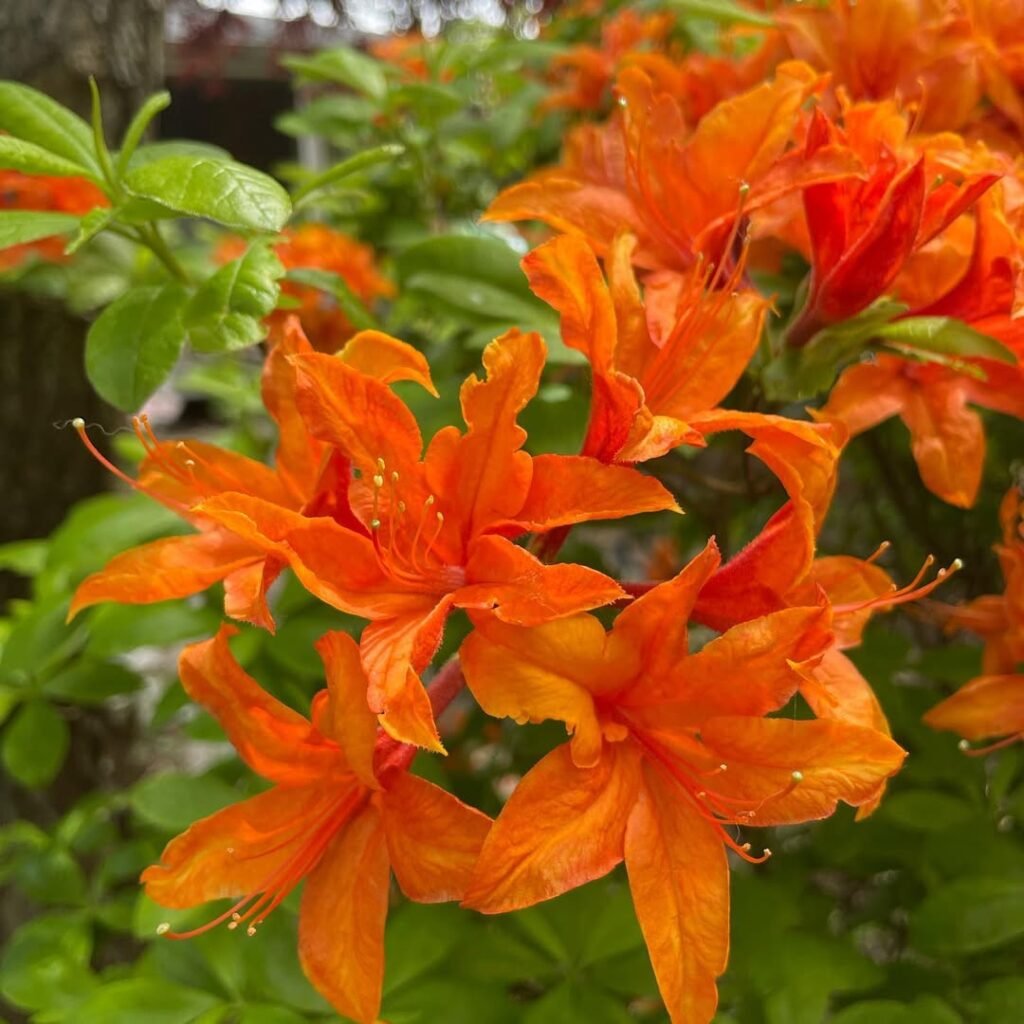Discover everything about orange azaleas—from planting and care to the best varieties for your US garden. Expert tips from Ashley Scott, a seasoned gardener.

Hey there, fellow garden lovers! I’m Ashley Scott, and with over 10 years of gardening experience under my belt, I’ve grown my fair share of plants across the USA. But let me tell you, there’s something truly special about orange azaleas that makes them stand out in any garden. I still remember the first time I saw an orange azalea bush in full bloom—it was at a friend’s place in Georgia, and those vibrant orange flowers against the lush green foliage took my breath away. I knew right then I had to have one in my own yard!
In this guide, I’ll walk you through everything you need to know about orange azaleas—from what they are and how to grow them, to the best varieties for your US garden. Whether you’re a seasoned gardener or just starting out, you’ll find practical tips to help your orange azalea shrub thrive. So, grab your gardening gloves, and let’s dive in!
What is an Orange Azalea?

Orange azaleas are a dazzling variety of flowering shrubs in the Rhododendron genus. While azaleas are often linked to pink, white, or purple blooms, the orange azalea brings a unique twist with colors ranging from soft peach to deep tangerine. These beauties typically burst into bloom in spring, though some varieties surprise you with flowers at other times.
Depending on the type, an orange azalea bush can grow anywhere from 2 to 6 feet tall, making it perfect for garden beds, borders, or even as an orange azalea tree in containers. They’re fairly low-maintenance, which is a big win for busy gardeners like me. If you’re looking to add a pop of color to your yard, these shrubs are a fantastic choice!
How to Grow Orange Azaleas

Growing an orange azalea isn’t much different from other azaleas, but there are a few key things I’ve learned over the years to get them just right.
Soil Requirements
Azaleas, including the orange azalea shrub, love acidic soil with a pH between 4.5 and 6.0. If your soil leans alkaline, don’t worry—I’ve been there! You can amend it with sulfur or use a fertilizer made for acid-loving plants. Personally, I mix in peat moss or composted pine bark to keep the pH in check. Want more details? Check out my guide on How to Acidify Soil over at USA Garden Hub.
Light Requirements
These shrubs thrive in partial shade, especially in hotter parts of the US. Too much direct sun can scorch their leaves, while too little light dims their blooms. I’ve found the sweet spot is morning sun with afternoon shade or dappled light all day. Trust me, your azalea orange will thank you with vibrant flowers!
Watering Needs
Orange azaleas like their soil consistently moist but hate soggy feet. Good drainage is a must! During dry spells, I water mine deeply once a week—sometimes with a soaker hose to keep things even. It’s a trick I picked up after losing a few plants to overwatering early in my gardening days.
Temperature and Hardiness Zones
Most orange azalea varieties are hardy in USDA zones 5 through 9, which covers a big chunk of the US. That said, always double-check your specific variety. In colder zones, I’ve had success mulching heavily or wrapping the shrub in burlap for winter protection.
Caring for Orange Azaleas
Once your orange azalea bush is in the ground, a little TLC goes a long way. Here’s what I do to keep mine thriving.
Fertilizing
I feed my azaleas with a slow-release fertilizer for acid-loving plants in early spring, right before new growth kicks in. Over-fertilizing is a rookie mistake I made once—it led to tons of leaves but hardly any blooms. Less is more here!
Mulching
A 2-3 inch layer of mulch around the base keeps moisture in and the soil cool. I swear by pine bark or pine straw—it also helps maintain that acidic pH we talked about.
Pruning
Prune your orange azalea shrub right after it blooms to shape it up and remove dead branches. I learned the hard way that pruning in late summer cuts off next year’s buds—oops! Stick to light trims for best results.
Pest and Disease Management
Watch out for lace bugs and spider mites—they love azaleas as much as I do. I tackle them with insecticidal soap or neem oil. Good air circulation also prevents fungal issues like powdery mildew. For more shrub care tips, see my article on Best Shrubs for Partial Shade.
Orange Azaleas in Containers
Yes, you can grow an orange azalea tree in a pot! It’s a game-changer for small spaces or renters like I was years ago. Here’s how:
Choosing the Right Pot
Go for a wide, shallow pot—azaleas have shallow roots. Drainage holes are non-negotiable to avoid waterlogging.
Soil Mix
I use a potting mix for acid-loving plants or whip up my own with peat moss, perlite, and compost. It’s worked like a charm every time.
Care Tips
Potted orange azaleas dry out faster, so I check the soil often and water when the top inch feels dry. In harsh winters, I bring mine into the garage to shield them from the cold.
Native Orange Azaleas
Love native plants? You’re in luck! There are some gorgeous orange native azaleas in the US:
- Florida Flame Azalea (Rhododendron austrinum) – Native to the Southeast, this beauty has orange-yellow blooms and attracts bees and butterflies.
- Piedmont Azalea (Rhododendron canescens) – Usually pink, but some have orange hues. It’s another southeastern native worth trying.
Growing these supports local wildlife and adds a natural touch to your garden. Check out more on native plants at the Lady Bird Johnson Wildflower Center.
Common Mistakes to Avoid with Orange Azaleas
I’ve made plenty of blunders growing orange azaleas, so here’s what NOT to do:
- Planting in Full Sun – I fried a poor azalea this way once. Stick to partial shade.
- Ignoring Soil pH – Alkaline soil stunts growth. Test your soil first!
- Overwatering – Soggy roots are a death sentence. Ensure good drainage.
Learn from my mistakes, and your azalea orange will thrive!
Where to Buy Orange Azaleas
You can snag orange azalea shrubs at local nurseries in spring—my go-to spot for healthy plants. Online, I’ve had luck with retailers like Nature Hills Nursery. Big-box stores like Home Depot often carry them too, though the variety might be limited. Look for plants with no signs of pests or wilting.
For more resources, the American Rhododendron Society is a goldmine for azalea info and suppliers.
Conclusion
Orange azaleas are a fantastic way to brighten up your garden with bold color and easy care. Whether you’re planting them in the ground, growing an orange azalea tree in a pot, or opting for a native variety like the Florida Flame, these shrubs are sure to impress.
The trick is simple: acidic soil, partial shade, and consistent moisture. With a little love, your orange azalea bush will reward you with stunning blooms year after year. So, what are you waiting for? Head to your local nursery or browse online, and let’s get those orange azaleas growing!
Have questions? Drop them below—I’d love to chat gardening with you!




